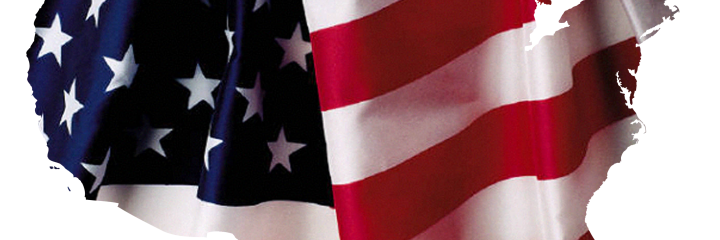FLAG HISTORY
Presented by: Freedom Field Project
The history of the glory that is the American Flag is deep, rich and long. For more than 200 years our flag has stood proudly as a symbol of freedom, patriotism and pride in our country. Often a source of unity and inspiration for our citizens, young and old, rich and poor, it holds a prominent and important position in our nation’s history.
The Flag of the United States of America has undergone many changes since it was first created. The US Flag of today consists of 13 stripes, alternating in red and white with the red always the first and last stripe. It contains a lush blue field of white stars in the upper left hand corner. Each element of our flag has meaning and significance. The 13 stripes represent the first 13 colonies and the stars symbolize each of our 50 states. The colors have their own powerful meanings; the blue field containing the stars of the 50 states stands for vigilance, perseverance and justice. The red stripes represents hardiness and valor and some might say that it also has come to symbolize the blood that our brave men and women have shed defending the freedoms that our flag has come to signify. The white then, as you might have guessed, symbolizes simple purity and innocence.
As the site, History of the Fourth shares:
On June 14, 1777, the Continental Congress passed an act establishing an official flag for the new nation. The resolution ordered that “the flag of the United States be made of thirteen stripes, alternate red and white; that the union be thirteen stars, white in a blue field, representing a new constellation.” On August 3, 1949, President Harry S. Truman commemorated the occasion by officially declaring June 14 as Flag Day.
- While no one knows the exact origin of the first American flag, some historians believe it was designed by Congressman Francis Hopkinson and sewn by Philadelphia seamstress Betsy Ross.
- The name “Old Glory” was given to a large, 10-by-17-foot flag. flag owned by William Driver, a sea captain from Massachusetts. Driver’s flag is said to have survived attempts to deface it during the Civil War. Driver was able to fly the flag over the Tennessee state house once the war ended. The flag was last displayed in an exhibit in 2006.
- Between 1777 and 1960, Congress passed several acts that changed the shape, design and arrangement of the flag and allowed stars and stripes to be added to reflect the admission of each new state.
- Today the flag consists of 13 horizontal stripes, seven red alternating with six white. The stripes represent the original 13 colonies, the stars represent the 50 states of the Union. The colors of the flag are symbolic as well, red symbolizes hardiness and valor, white symbolizes purity and innocence and blue represents vigilance, perseverance and justice.
- The National Museum of American History has undertaken a long-term conservation project of the enormous 1814 garrison flag that survived the 25-hour shelling of Fort McHenry in Baltimore by British troops and inspired Francis Scott Key to compose “The Star-Spangled Banner.” The flag had become soiled and weakened over time and was removed from the museum in December 1998. Conservation efforts began in June 1999, starting with the removal of the linen support backing that was sewn into place in 1914 using 1.7 million stitches. Painstaking steps must be taken to preserve the flag, including pH readings to measure the levels of acid or base in the fabric, color readings to analyze dyes in the fabric and fiber analysis through microscopic examination. A thorough vacuuming of all surfaces and large-format photographing of every section of the flag to benchmark its condition must also occur before conservation measures are undertaken.
- The U.S. flag is flown 24 hours a day by either presidential proclamation or law at the following places:
- Fort McHenry, National Monument and Historic Shrine, Baltimore, Maryland
- Flag House Square, Baltimore, Maryland
- United States Marine Corps Memorial (Iwo Jima), Arlington, Virginia
- On the Green of the Town of Lexington, Massachusetts
- The White House, Washington, D.C.
- United States Customs Ports of Entry
- Grounds of the National Memorial Arch in Valley Forge State Park, Valley Forge, Pennsylvania
You can brush up on our flags history by visiting our Flag Timeline page and then take a peek at our Flag Etiquettepage.

